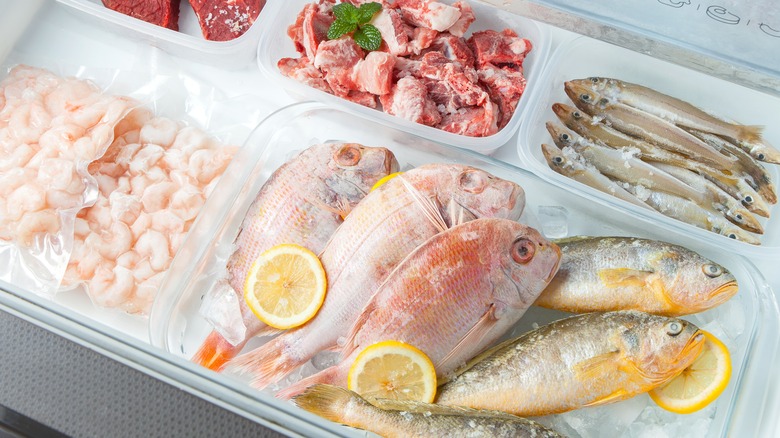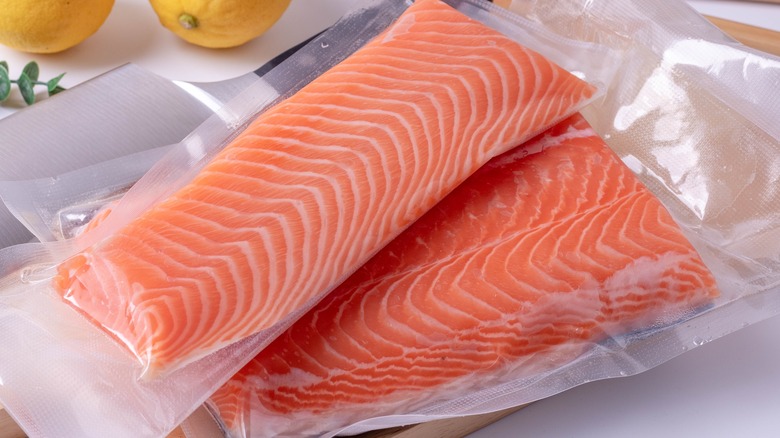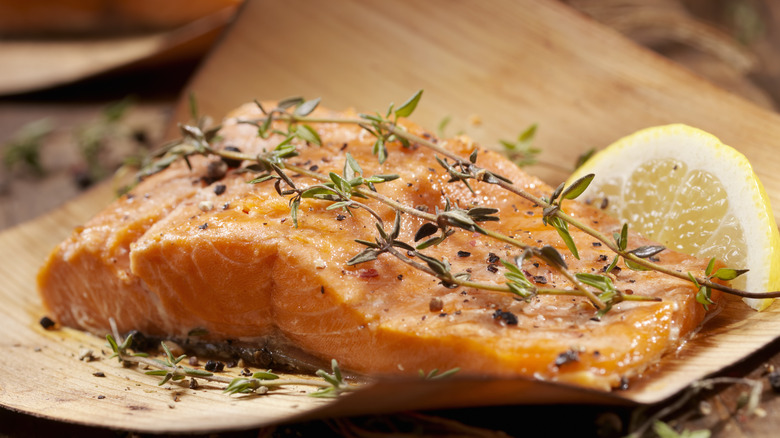How To Safely Thaw Seafood Without Accidentally Cooking It
Seafood is an essential part of a well-balanced diet, but getting it fresh isn't always affordable for families, according to a 2022 study published in The American Journal of Clinical Nutrition. Plus, those who prefer to shop in bulk may not consume fresh seafood before it expires. In these cases, grabbing frozen bags of fish or shrimp is a fantastic solution. Contrary to some myths about frozen food, frozen seafood is just as nutritious as fresh. You just have to know how to thaw it properly.
Thawing in the microwave is a go-to for busy families and is an approved method of defrosting frozen foods as long as you immediately cook them afterward. However, doing so can slightly cook thinner parts of the fish, resulting in an overdone dish when you fully grill, fry, or bake it. So, how do you safely thaw seafood without accidentally cooking it?
Fortunately, there are better ways to defrost food. The best method is to let it sit for at least 24 hours in the refrigerator to avoid the growth of unsafe bacteria. After it's thawed, it can stay in the refrigerator for a day or two before you cook it. The second-best option is to submerge frozen seafood in cold water for 30-minute intervals, changing out the water until the food is fully thawed.
What not to do when thawing seafood
Avoid leaving frozen foods on the counter and thawing them with hot water. These practices aren't considered safe because they can cause foodborne illnesses.
Any microbes present on raw food before it's frozen don't die; They only become inactive. The USDA explains that, after reaching a temperature of more than 40 degrees Fahrenheit, bacteria become active again and can multiply. If the thawed food isn't handled with proper care, the microbes can spread to other surfaces and ready-made foods, potentially making you sick.
Furthermore, it's a huge mistake when thawing fish to leave it in reduced oxygen packaging. Vacuum-sealed pouches prevent water loss so that seafood doesn't dry out and can last longer in the freezer. The problem, though, is that certain bacteria can survive with very little oxygen and cause serious and life-threatening diseases such as botulism. To protect yourself and others, you should remove seafood from this type of packaging while it's still frozen and seal it in a leak-proof plastic bag before thawing in the fridge or cold water.
You can cook seafood from frozen in a pinch
If you don't have time to thaw your frozen seafood using the safe methods above, it's possible to skip defrosting altogether. The USDA notes that you'll have to increase the cooking time by about 50% compared to the recommended time for fully thawed food.
For example, when you bake salmon straight from frozen, it will take about 30 minutes to cook at 350 degrees Fahrenheit, brushing with oil and a few spices along the way. By comparison, fully thawed salmon would only take about 15 minutes to cook. If the straight-from-frozen fish turns out a little dry, you can serve it with a saucy topping to reintroduce some moisture. Baking works for cooking more than salmon from frozen, too: You can do it with many fish varieties, including cod and halibut. It's even a quick way to cook frozen shrimp without thawing it.
Additionally, grilling works great for preparing bivalves, crustaceans, and fish. You could even use an instant pot, an air fryer, or a pan on the stovetop. If you choose to grill or pan-fry, though, wait until after you flip the seafood to sprinkle on your spices. Otherwise, the seasonings will stick and burn to the cooking surface.


